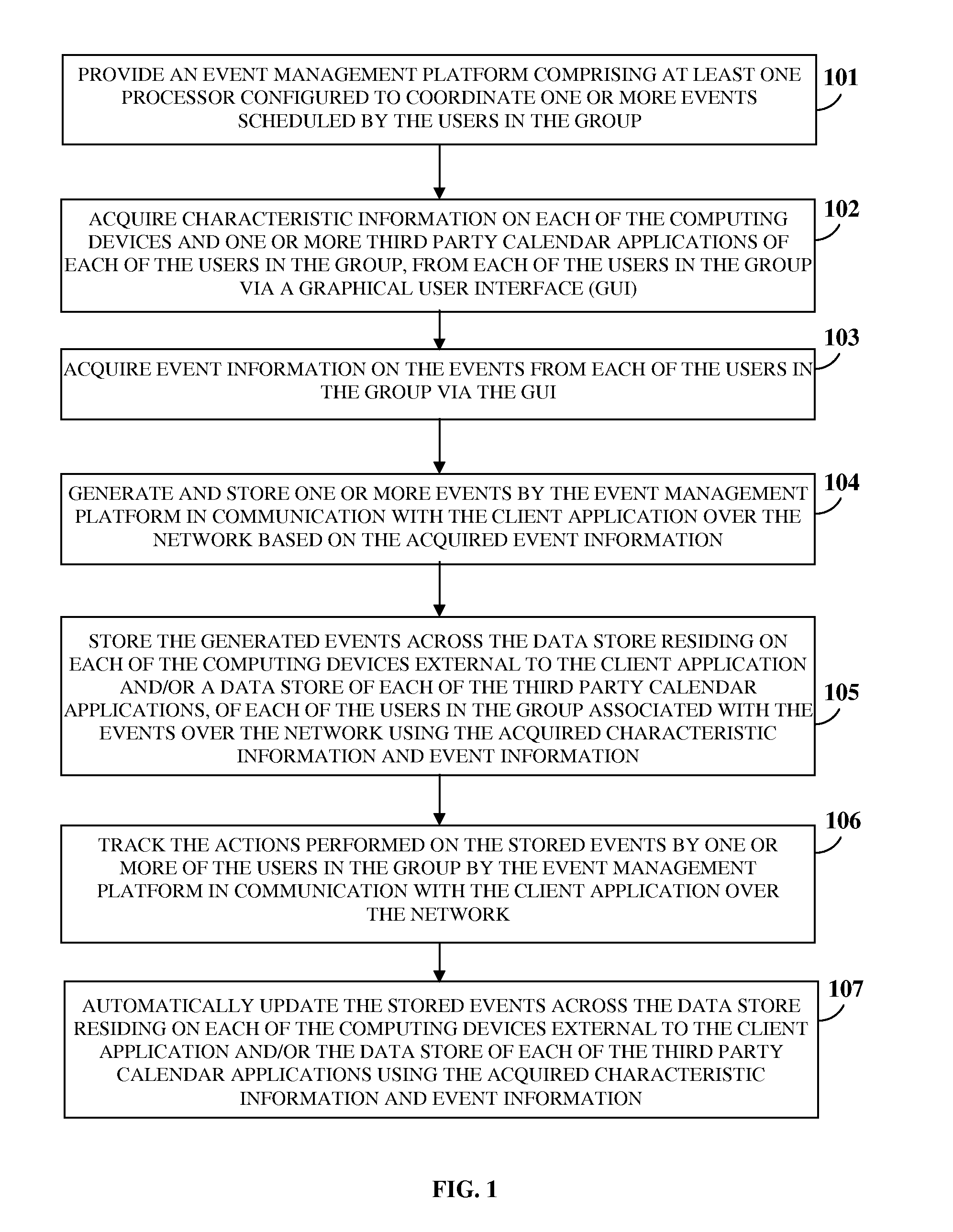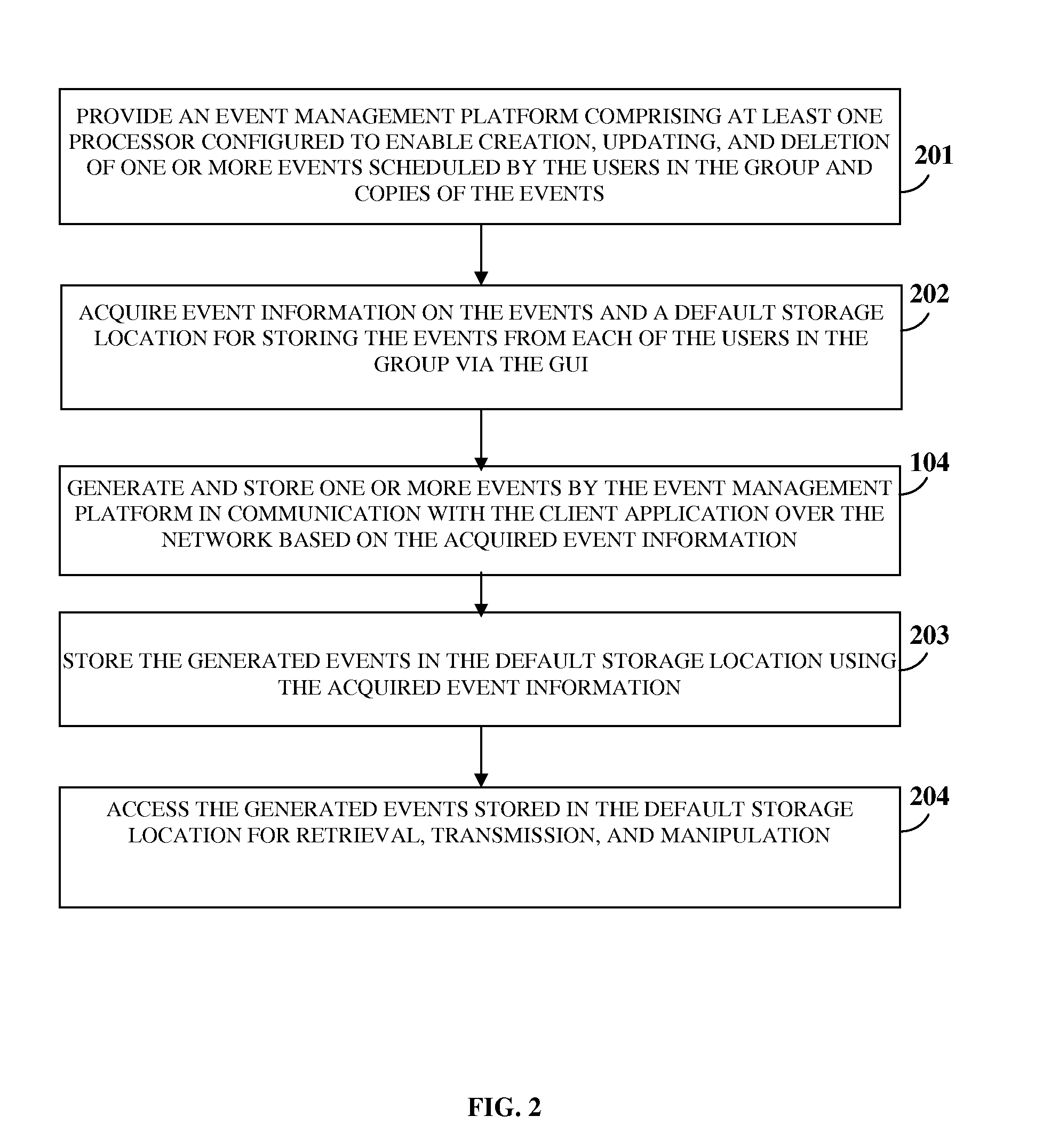Unified Virtual Group Calendar System
a virtual group and calendar technology, applied in the field can solve the problems of limited capacity of electronic calendaring systems to handle newer computing devices and operating systems, inability to scale up to handle an increase in the number of events being scheduled, and limited ability to form partnerships with third-party calendar vendors or independent software publishers
- Summary
- Abstract
- Description
- Claims
- Application Information
AI Technical Summary
Benefits of technology
Problems solved by technology
Method used
Image
Examples
Embodiment Construction
[0073]FIG. 1 illustrates a computer implemented method for managing one or more events scheduled by multiple users in a group. As used herein, the term “event” refers to an electronic representation of a physical occurrence of an activity. A user is an entity who adds, accesses, updates, and deletes information on one or more events. A user is, for example, a human being, a software agent configured to operate on behalf of a human being, etc.
[0074]The computer implemented method disclosed herein provides 101 an event management platform comprising at least one processor configured to coordinate the events scheduled by the users in the group. The event management platform is in communication with a client application deployed on each of one or more computing devices of each of the users in the group via a network. The computing devices are, for example, personal computers, laptops, mobile phones, mobile computers, smart phones, tablet computers, personal digital assistants, etc. The ...
PUM
 Login to View More
Login to View More Abstract
Description
Claims
Application Information
 Login to View More
Login to View More - R&D
- Intellectual Property
- Life Sciences
- Materials
- Tech Scout
- Unparalleled Data Quality
- Higher Quality Content
- 60% Fewer Hallucinations
Browse by: Latest US Patents, China's latest patents, Technical Efficacy Thesaurus, Application Domain, Technology Topic, Popular Technical Reports.
© 2025 PatSnap. All rights reserved.Legal|Privacy policy|Modern Slavery Act Transparency Statement|Sitemap|About US| Contact US: help@patsnap.com



